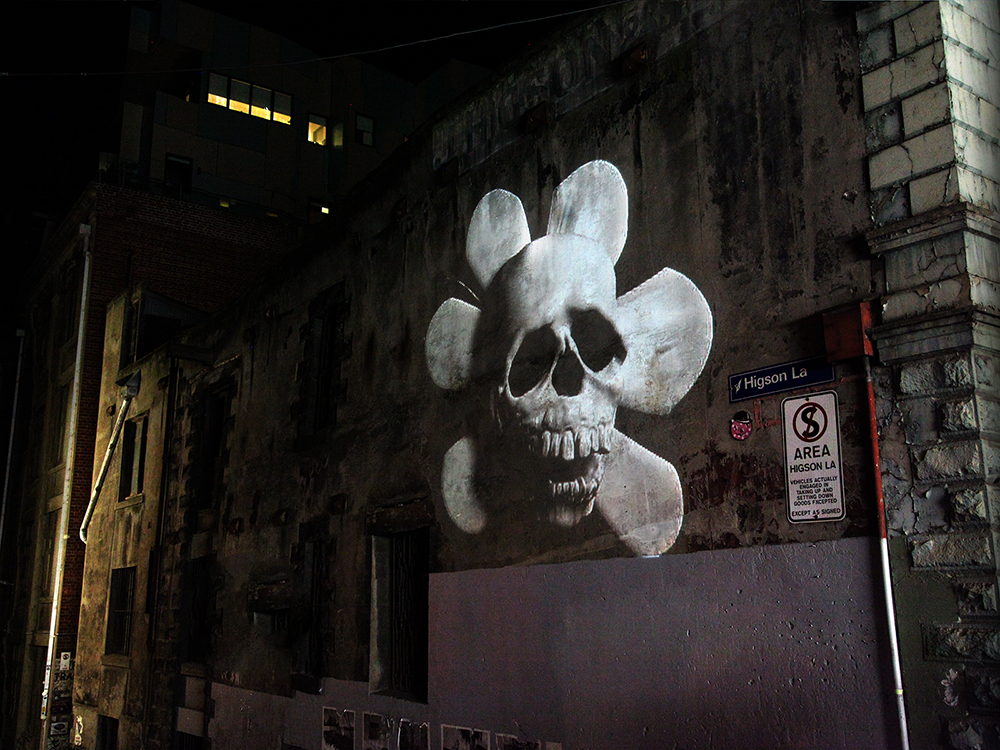The Plasmatic series consists of three projected animation artworks that explore improvised digital sculpture and metamorphic animation. These works investigate the relationship between spontaneous thought, digital materiality, and animated transformation.
Each work in the series presents a continuously morphing form, ethereal sculptures that emerge and transform seamlessly. The animations are exhibited as large-scale projections that allow the forms to appear to float in space, deliberately avoiding the traditional frame of the screen.
The series demonstrates a novel approach to 3D animation production that privileges spontaneity and material engagement over traditional planned 3D animation production pipelines. This unique workflow combines digital sculpting technology with animation techniques to capture improvised sculptural gestures in temporal sequence.
Exhibition History
Plasmatic No. 1 premiered at the 2014 Gertrude Street Projection Festival in Melbourne, projected onto the interior brick wall of a retail space and visible to festival attendees through the storefront windows. The work’s lighting scheme was carefully designed to match the ambient street lighting, enhancing the illusion of the form’s presence in the space.

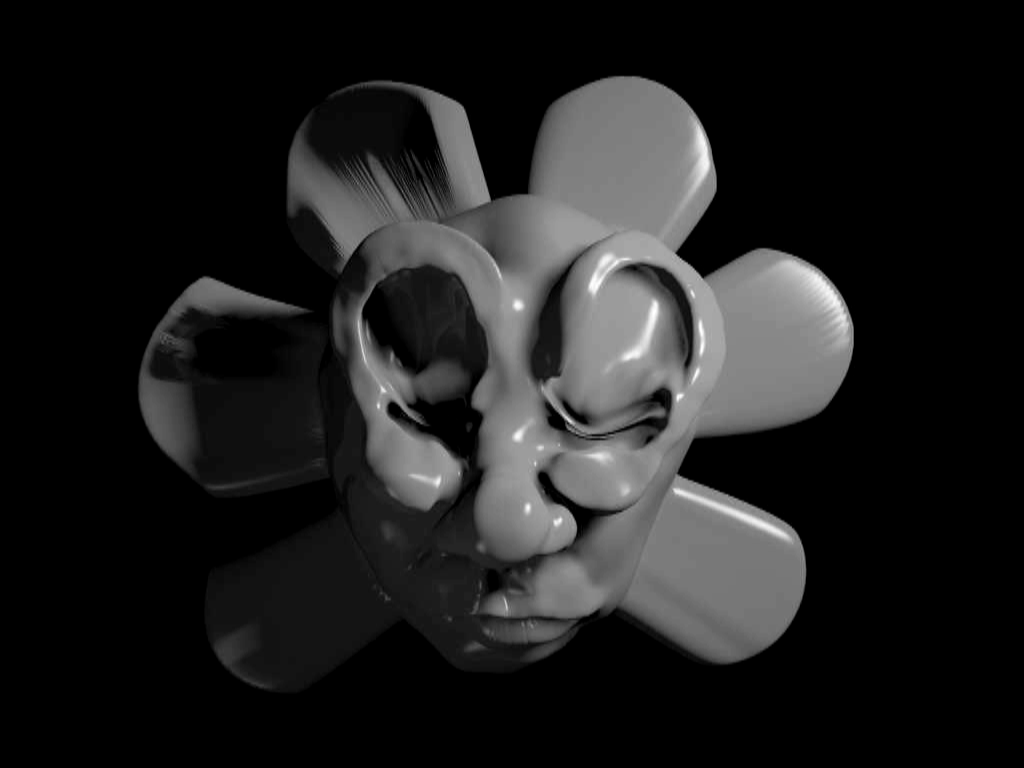
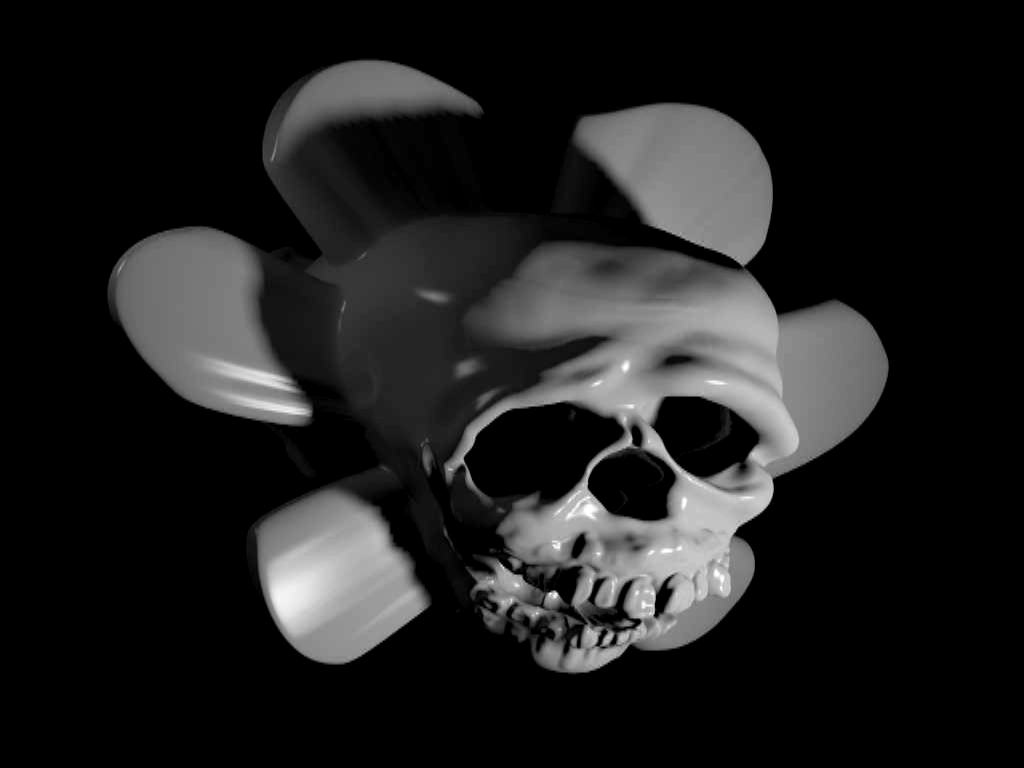

Plasmatic No. 2 was exhibited at two venues during the 2014 International Symposium on Electronic Art (ISEA) in Dubai – at the Maraya Art Park in Sharjah and in the historic Al Fahidi district. The work’s reflection effects subtly referenced the park setting of its first installation.\
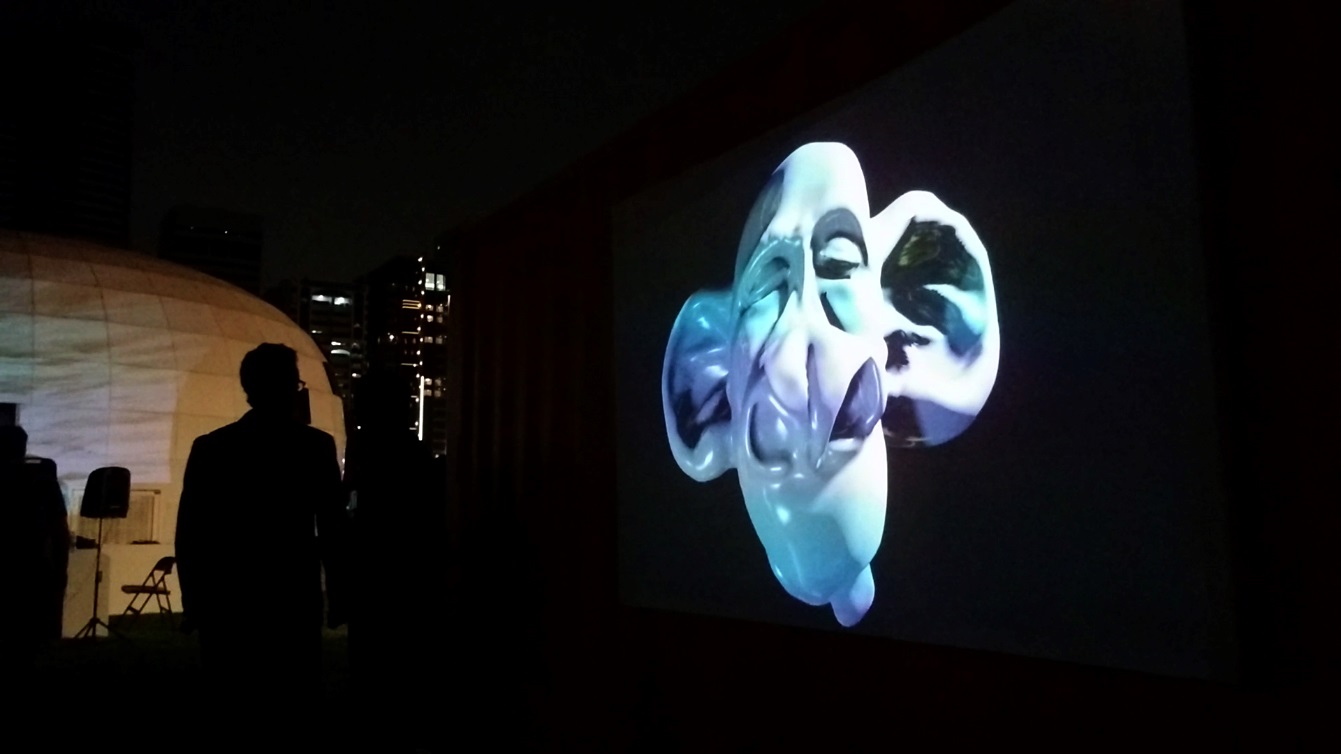
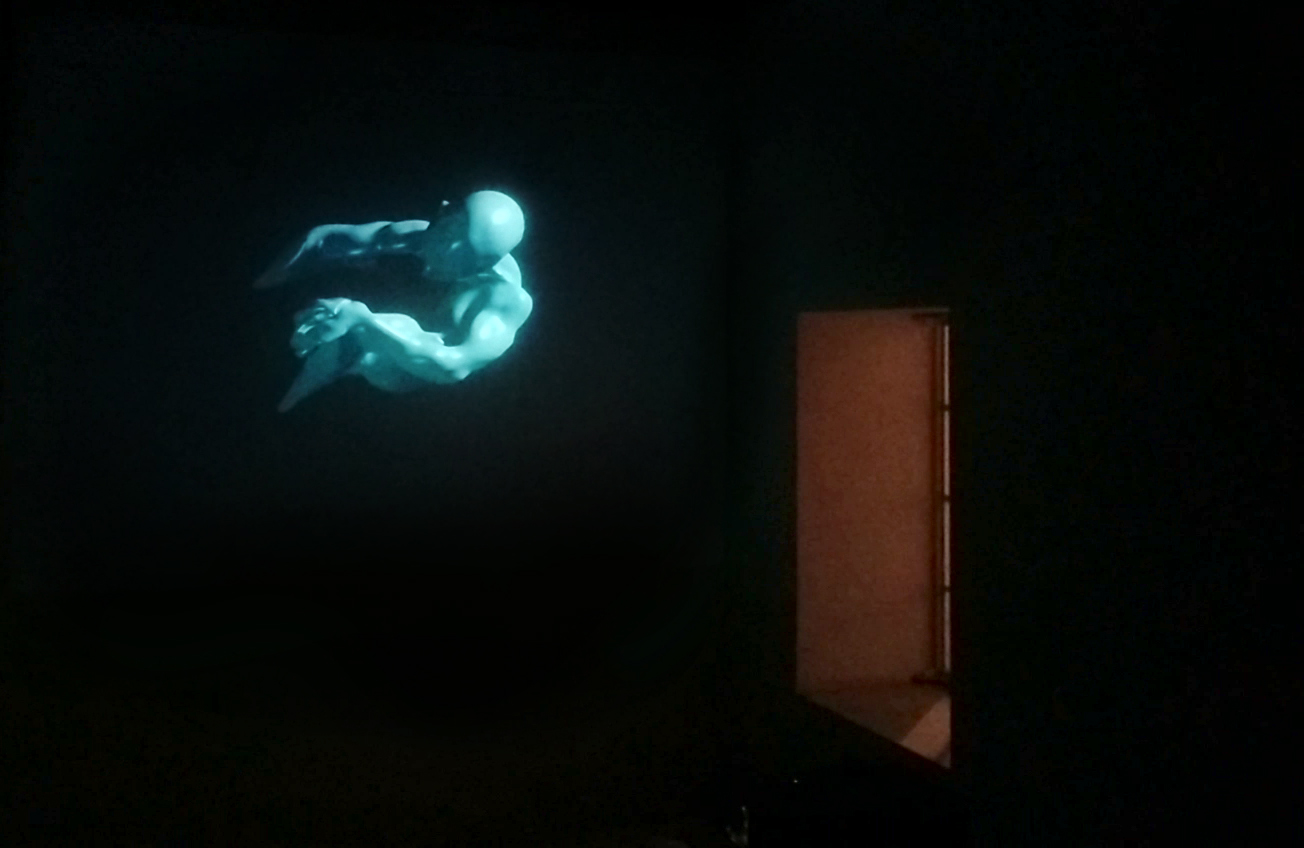
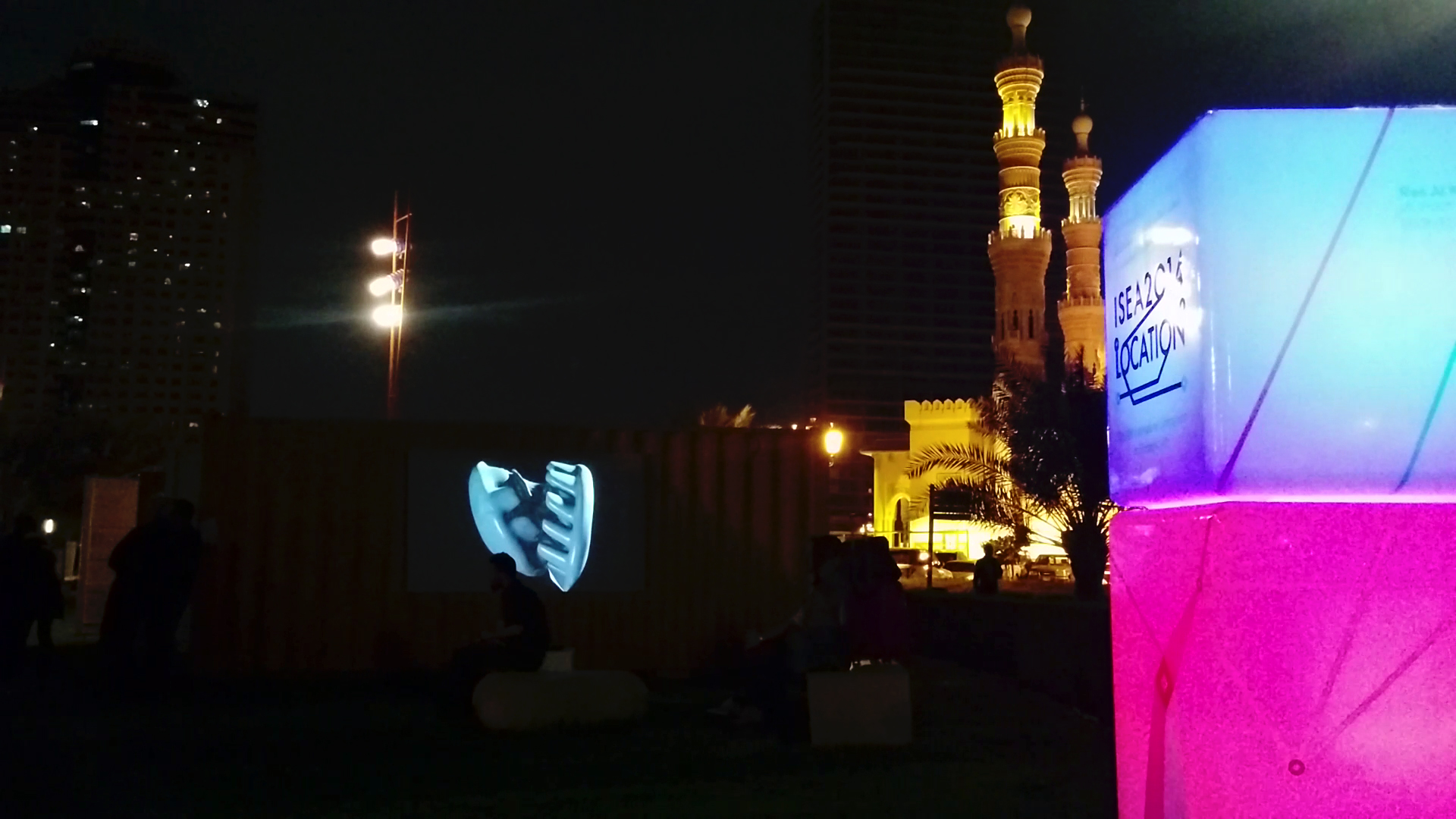
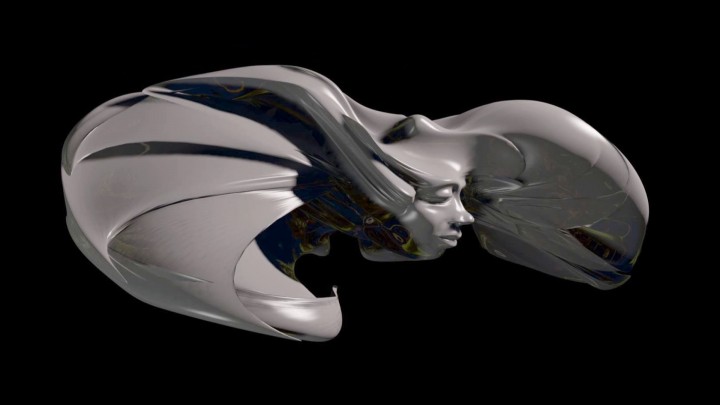
Plasmatic No. 3 debuted at White Night Melbourne 2015, an all-night arts festival attended by over 450,000 people. Following this event, Plasmatic No. 1 and No. 3 were exhibited together for 30 nights.
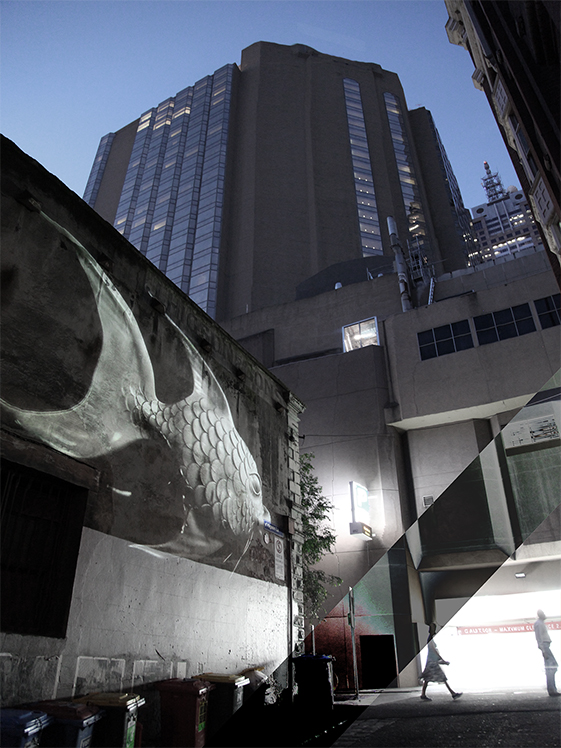
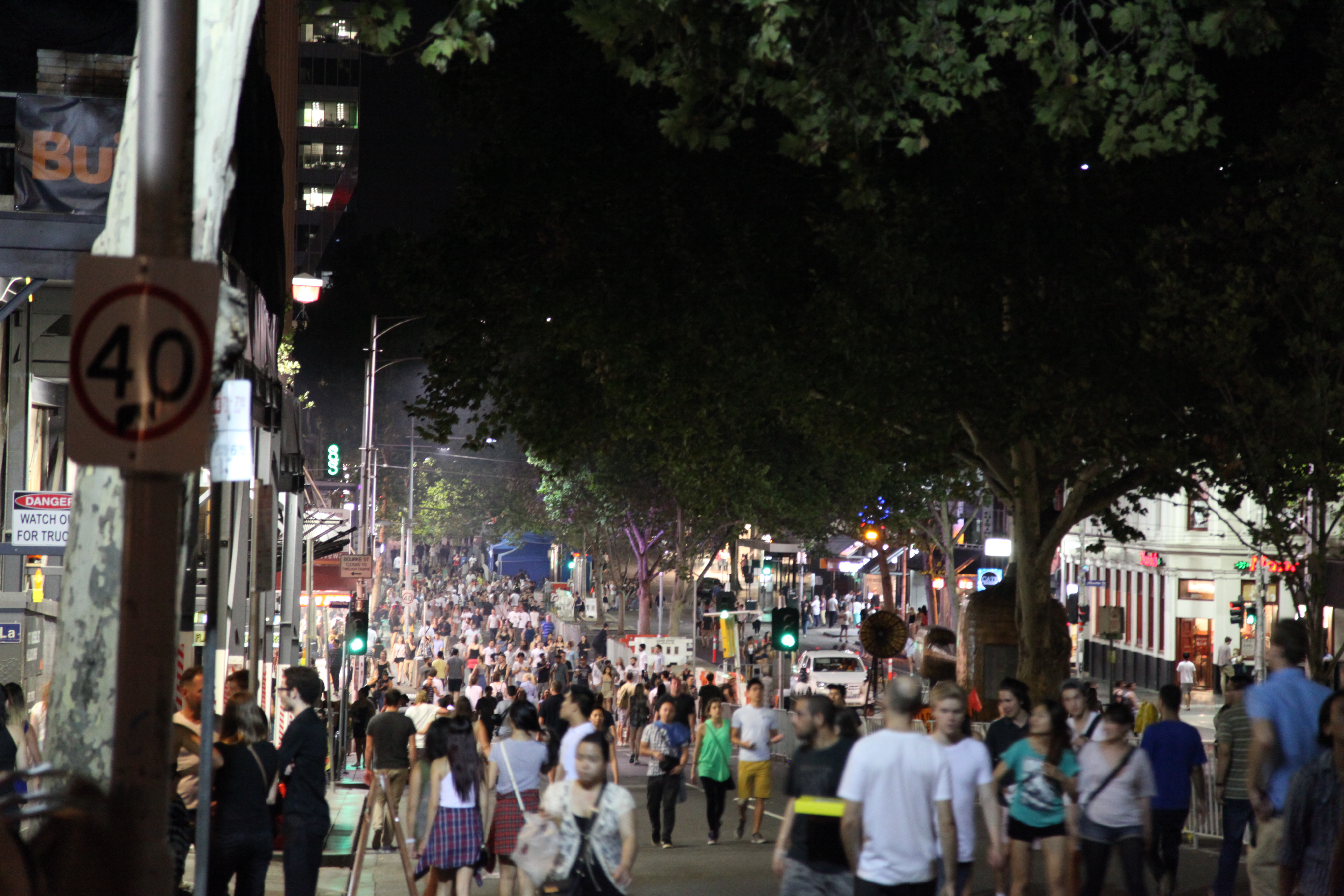
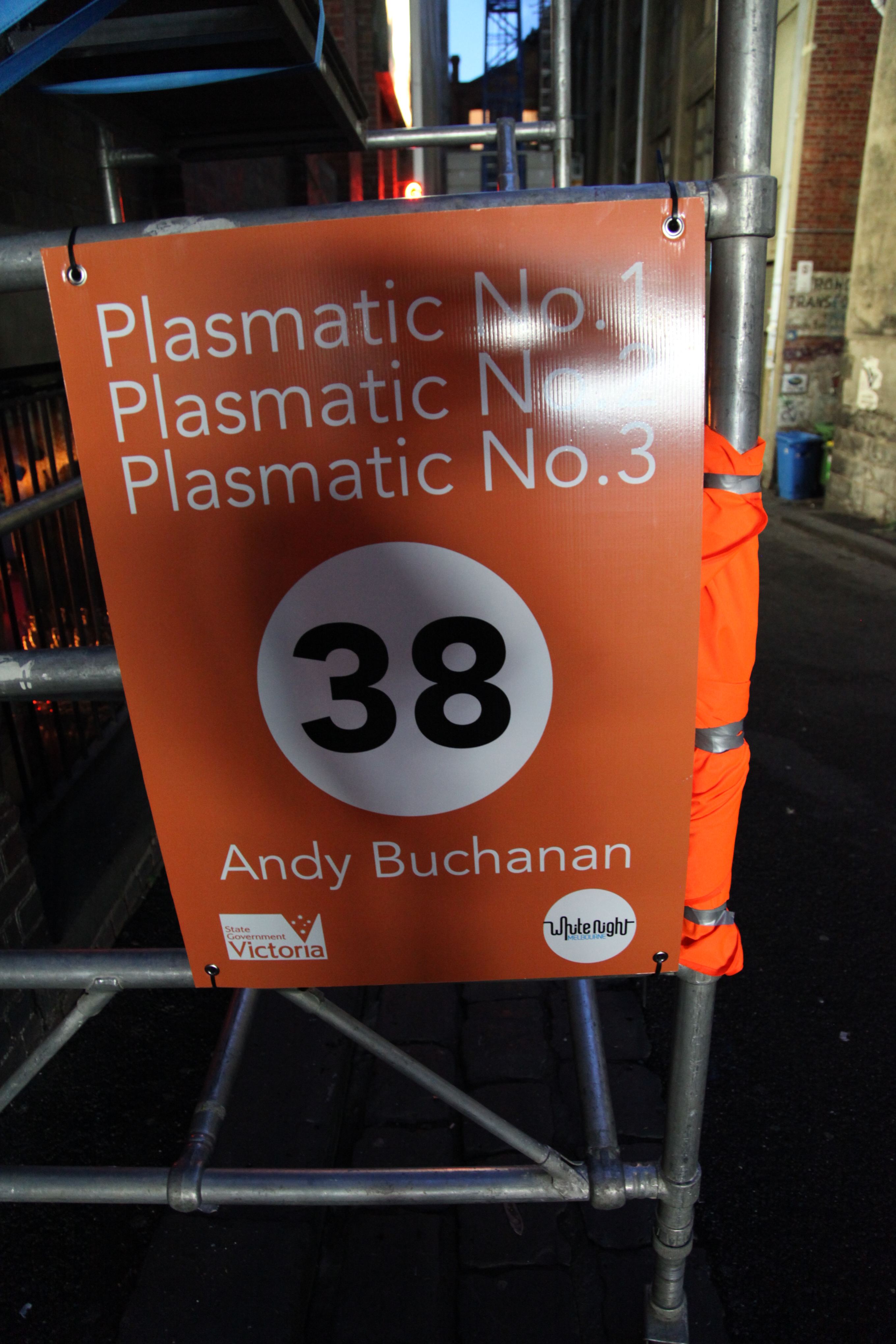
Technical Innovation
The works employ a custom workflow that begins with a specially prepared 3D mesh exhibiting “harmonious equipotential” – an even distribution of polygon density that allows for unlimited sculptural possibility. Using a digital drawing tablet, forms are sculpted spontaneously and captured in sequence. These sculptures are then animated using 3D morphing techniques that preserve the improvisational nature of their creation.
The technical approach deliberately subverts conventional 3D animation production pipelines by minimizing interface interactions and emphasizing direct material engagement with the virtual mesh. Rather than using standard modeling tools and menus, the workflow relies on a limited set of sculpting operations accessed through tablet hotkeys, allowing for an uninterrupted flow between mental impulse and digital form. This creates a unique embodiment relation between artist and technology that more closely resembles traditional sculptural practice.
The animation phase employs morph target animation in an unconventional way – rather than creating planned transitions between predetermined forms, the morphing system is used to capture the temporal sequence of improvised sculptures, including both the deliberate sculptural moments and the exploratory “wandering” between forms. This preserves the spontaneous nature of the creative process in the final animated result.
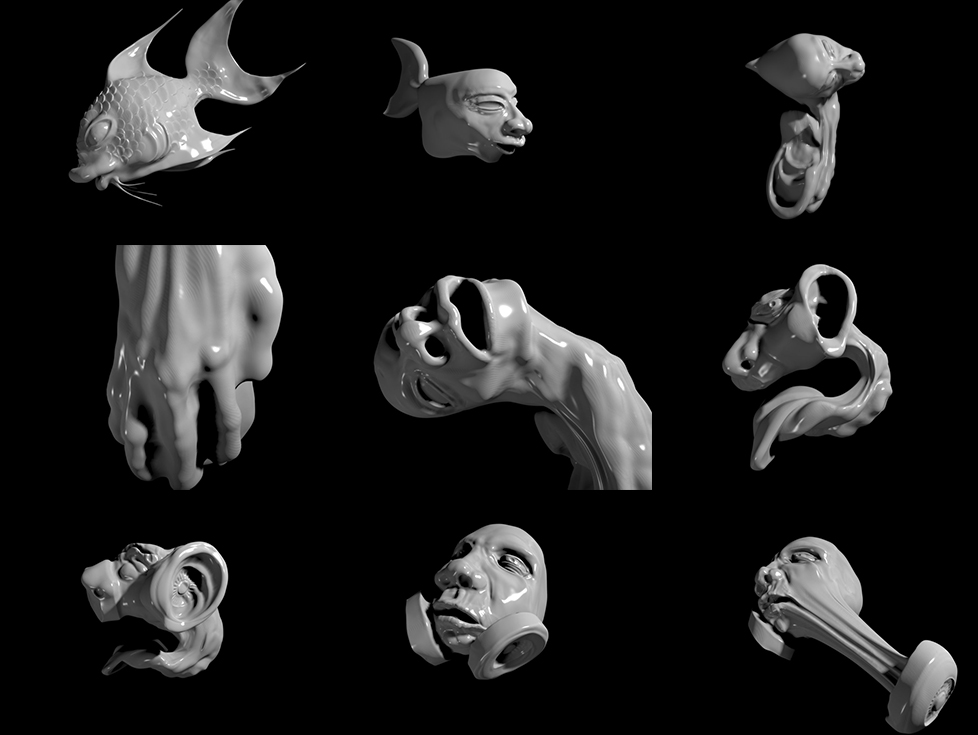
Theoretical Framework
Metamorphosis and the “Plasmatic” in Animation
The works build on Sergei Eisenstein’s concept of “plasmaticness” in animation – the ability to reject fixed form and dynamically assume any shape. While Eisenstein identified this quality primarily in early Disney animations, the Plasmatic series explores it as a fundamental property of digital materials and mental processes. The works demonstrate how animated metamorphosis can operate not just as a visual effect but as a unique philosophical instrument for investigating the common natures of form, consciousness, and transformation.
Phenomenology and Embodied Cognition
The research adopts phenomenological approaches to understanding both the production and reception of digital artworks. Drawing on Merleau-Ponty’s concepts of the “virtual body” and Don Ihde’s “embodiment relations,” the works investigate how digital tools can become integrated into an expanded sense of artistic practice. The improvisational workflow developed for the series demonstrates how digital sculpture can achieve what Focillon calls a “pure phenomenology of sensate presence.”
Stream of Consciousness and Mental Imagery
William James’ description of consciousness as a continuous stream charcterised by “substantive” and “transitive” states provides a theoretical framework for understanding the relationship between improvised animation and mental experience. The metamorphic transitions in the works mirror James’ description of how one thought transforms into another, suggesting animation’s unique capacity to visualize aspects of consciousness unavailable to other media.
Digital Materiality and Virtual Craft
The series questions traditional notions of materiality in digital art production. Rather than treating 3D software as a means to predetermined ends, the works explore how virtual materials can participate in emergent creative processes. This builds on theories of “material agency” from anthropology and craft studies, demonstrating how digital tools and materials can become active collaborators in artistic creation rather than passive instruments.
Research Impact
This body of work demonstrates how animation can serve as a unique instrument for investigating and representing internal mental experiences. The series establishes new possibilities for improvisational practice in digital animation while contributing to discourses on metamorphosis, materiality, and consciousness in animation studies.
During the period of production, the works were presented and discussed at multiple international conferences including the Society for Animation Studies Conference (Toronto 2014), the International Symposium on Electronic Art (Dubai 2014), and the International Conference on the Image (Berlin 2014).
The Plasmatic series represents a confluence of artistic innovation, theoretical investigation, and public engagement – an integration of creative practice and academic research in contemporary digital arts.
